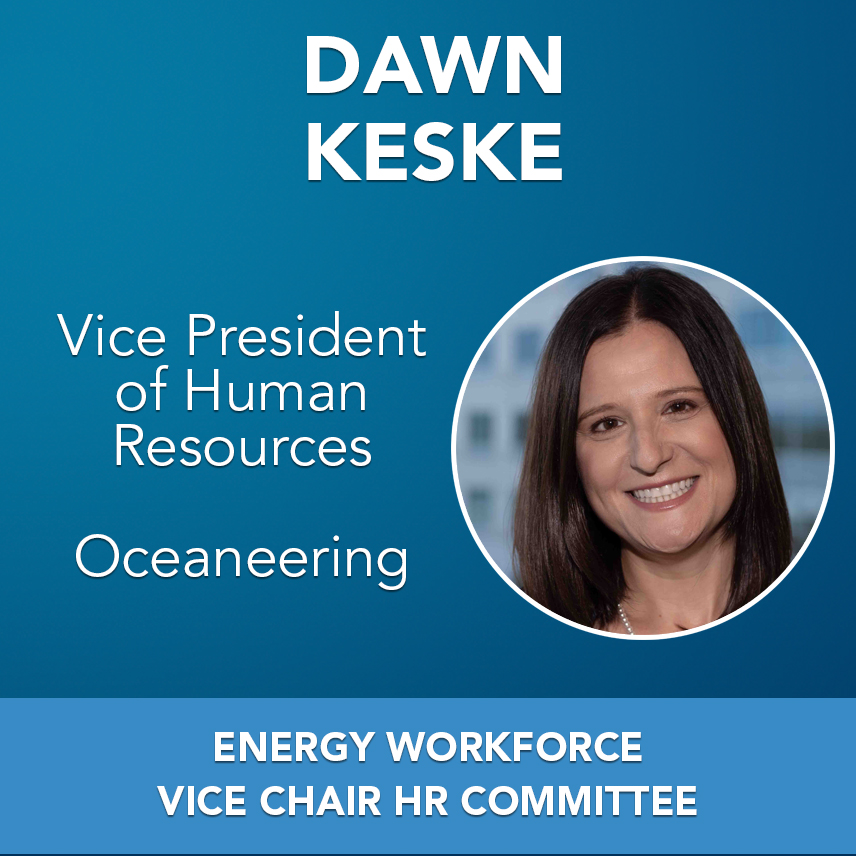Dawn Keske is Vice President of Human Resources, Oceaneering, and Vice Chair of the Energy Workforce HR Committee. She recently shared her thoughts on women in oil and gas.
Energy Workforce: Why did you get involved in oil and gas?

Dawn Keske: I happened to join the oil and gas industry by happenstance as I was doing my master’s degree in HR. I wanted to work in an industrial environment with a company that had a global footprint. My first professional job was in oil and gas, and I’ve stayed in the industry for over 20 years because I’m proud to be a part of sector that solves complex problems through innovation, is constantly adapting to change, and creates job opportunities for so many people.
EW: What are the major changes you’ve seen during your time in the industry?
DK: Adoption of energy transition technologies and investments in digital technologies and robotics have been major changes in the industry, which has brought about new jobs that require different skill sets. This has created opportunities for people to move from other industries into oil and gas where transferrable experience and skills are needed. I’ve also seen a greater movement of people in and out of the industry. In the past, people made long careers within the industry, and it was more difficult to gain entry if you had not started your career in it. With labor shortages and changing needs for skills sets, this trend has changed. Likewise, retaining talent in the industry has become a greater challenge. I’ve also seen an increase in the number of women in STEM-related jobs and senior leadership roles due to the increased focus on diversity and building diverse pipelines of talent. Finally, like many other companies, I’ve seen oil and gas companies adapt to new ways of working – offering remote and hybrid work arrangements.
EW: What do you think companies could do to retain female employees?
DK: More flexibility in the workplace – work schedules, remote or hybrid work, and part-time work – can help retain female employees who often have childcare and other time obligations outside of the workplace. This includes flexibility given to new mothers who may need more time at home with an infant. Understanding individual needs and helping female employees create a better work-life harmonization can help retention and engagement. Intentional decisions to provide sponsorship and focus mentorship on females can help with retention and progression into leadership roles.
EW: Do you have a mentor, and if so, how has mentorship helped you towards your career goals?
DK: I currently have a great mentor that provides valuable insights and knowledge to help me navigate challenges and opportunities in my role. They openly share their experiences to help me learn and grow, and they are a great thought partner for testing my ideas and techniques. Over the years, I’ve been fortunate to have a network of informal mentors as well. I’ve actively sought out these relationships for professional development. I like to say that “Development” has a “ME” in it, which means it’s also up to ME to seek out mentors and make connections with people from whom I can learn and who can support my career goals. They have advocated for new opportunities, greater exposure, and promotions for me.
EW: What advice would you give women thinking about a career in oil and gas?
DK: Connect with other professionals in the industry. Ask questions and remain curious about opportunities. Educate yourself on the energy transition and the critical role the oil and gas industry will continue to play in this journey. It’s an exciting industry in which to work with many career options. Connect with other women in the industry who can share their stories and advice. Consider focusing your education on STEM disciplines to prepare for critical roles in the industry where there is a growing necessity for talent and need to attract more women into these roles.
Click here to subscribe to the Energy Workforce newsletter, which highlights sector-specific issues, best practices, activities and more.




